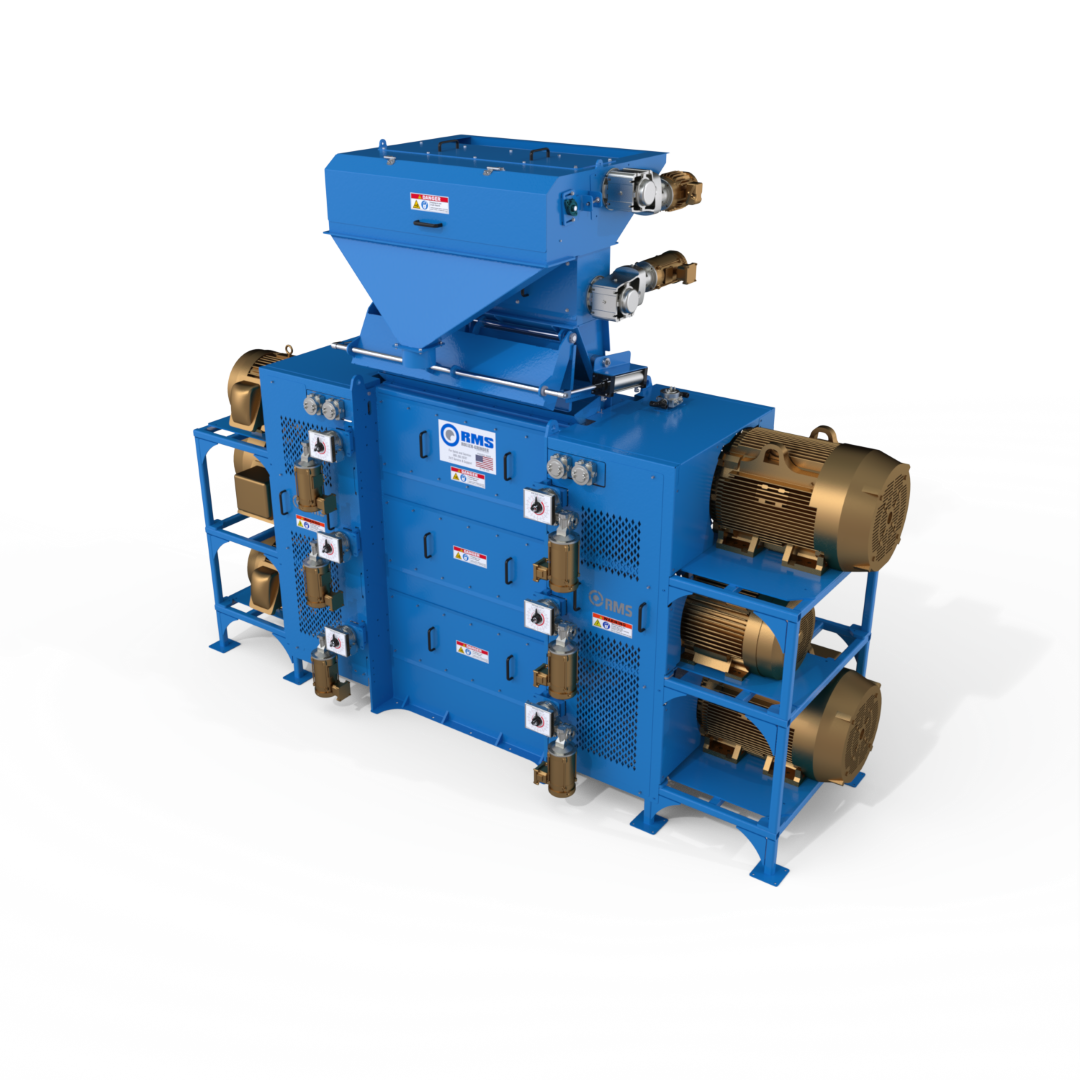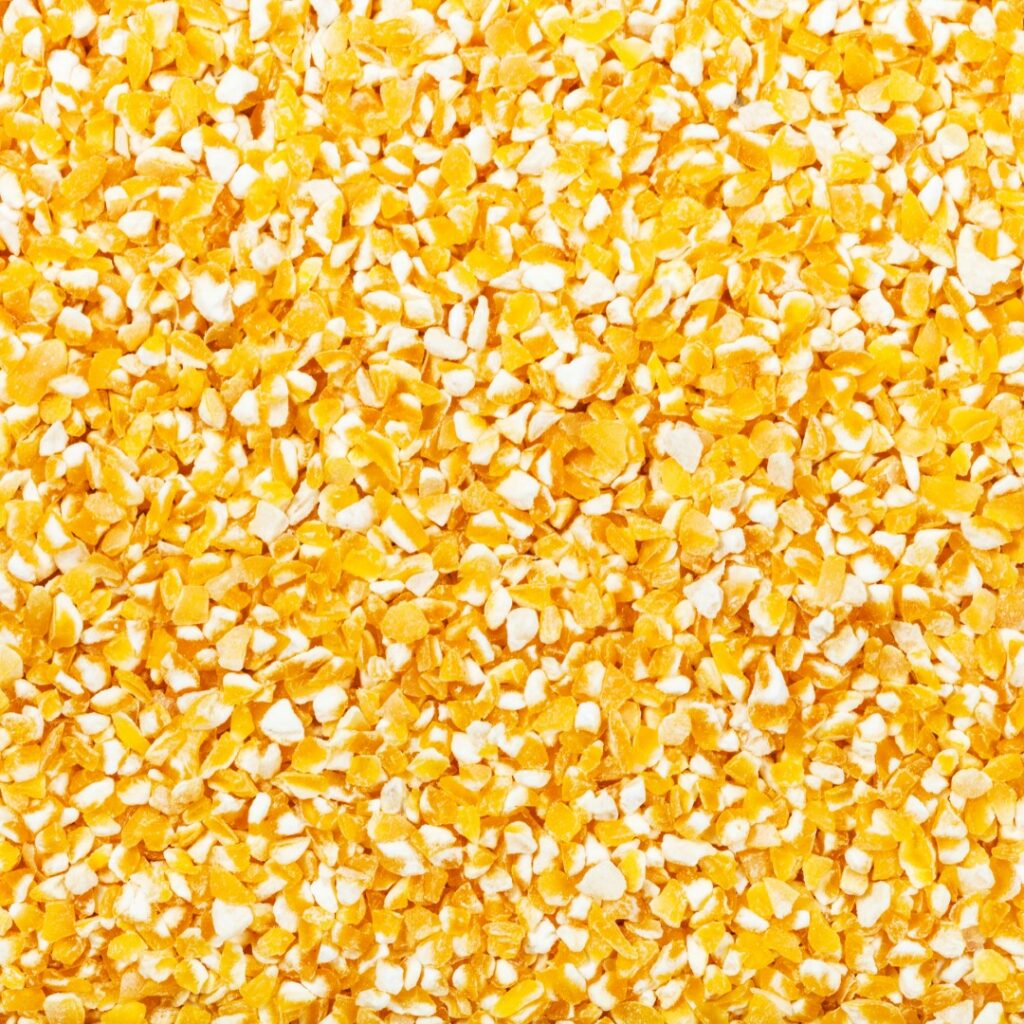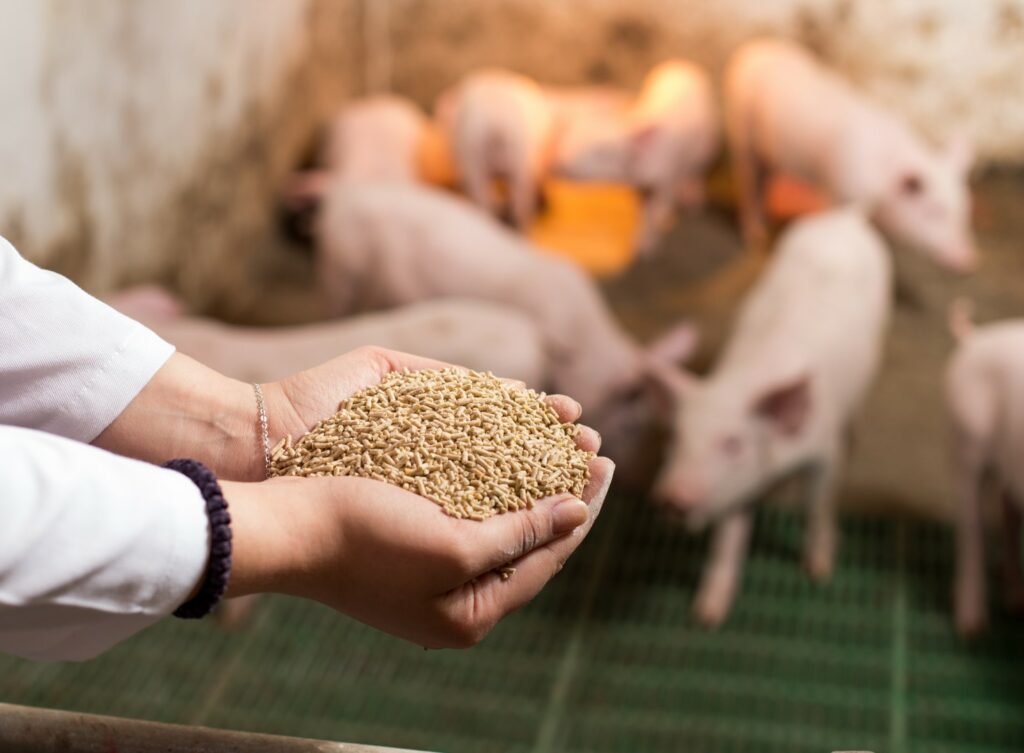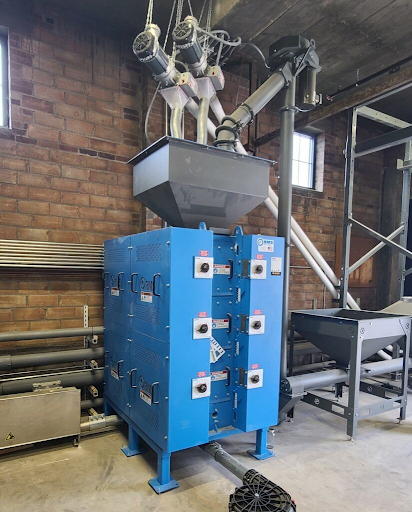
When deciding on the right milling equipment for your operations, it’s essential to understand your options. Two primary types of machinery available are roller mills and hammer mills. Now, RMS also offers the VersaMill, a direct-drive roller mill that allows for even greater control.
Many people have questions about the difference between a roller mill vs. a hammer mill. Here, we dig deeper into the most commonly asked questions, including what is a hammer mill, what is a roller mill, what are their common benefits and applications, and what machine owners can expect in regard to maintenance for each type of equipment.
What’s the Difference Between a Roller Mill vs. Hammer Mill?
 A hammer mill acts like the name implies, milling grain with a smashing motion. If you took a kernel of corn and smashed it, you would have multiple pieces with variation in size.
A hammer mill acts like the name implies, milling grain with a smashing motion. If you took a kernel of corn and smashed it, you would have multiple pieces with variation in size.
A roller mill acts more like a cutting knife. As one roller spins against another, it creates a shearing effect. Roller mill particle size generally sees lower variance than hammer mills, which results in a more consistent grind.
Hammer mills also use different screen sizes to adjust the particle size for either a coarser or finer grain. Often, they have to shut down their entire mill to change a screen.
On the other hand, roller mills can alter the grind simply by changing the roll position. If you want to achieve a finer grind, you can move the rolls in. If you’re looking for a coarser grind, you do the opposite and back the rolls out.
The VersaMill can also control the speed of each roller. Differential roll speeds allow for greater sheer, and an even finer grind than with a traditional roller mill.
Is a Roller Mill Better Than an Industrial Hammer Mill?
Target particle size is a leading factor in determining if a roller mill vs. hammer mill is better for your application. If the material has high moisture, then a roller mill is also generally better. With a hammer mill, you run the risk of the temperature of the product rising as it runs through the machine, which can lead to plugging and increased fire risk.
If a coarse grind is desired, a roller mill can generate coarser particle sizes at a much higher consistency. The pulverizing motion of a hammer mill often leads to more waste in the form of “fines” than grinding with a roller mill.
What Are Some Common Industrial Roller Mill Uses and Benefits?
 Simply put, roller mills are used for particle size reduction, taking raw material and reducing it into a usable size for a given application. They are used to execute consistent, high-quality particle reduction in non-fibrous materials such as grains, fertilizers, coffee beans, and other biomasses.
Simply put, roller mills are used for particle size reduction, taking raw material and reducing it into a usable size for a given application. They are used to execute consistent, high-quality particle reduction in non-fibrous materials such as grains, fertilizers, coffee beans, and other biomasses.
One key benefit of a roller mill is its ability to produce a consistent grind profile. Due to its grinding process, the distribution of particles sizes is far more predictable than a hammer mill. Another main benefit of a roller mill vs. hammer mill is that it uses substantially less energy. The roller milling process does not produce excess heat and other energy-consuming effects like hammer milling does.
Energy efficiency is becoming a top priority for many mill owners, and roller mills are typically around 25 to 30% more energy efficient than their hammer mill counterparts. The VersaMill is even more efficient than a traditional roller mill because it does not use belts. It’s a higher end machine than your typical roller mill, but the energy savings pay dividends down the line.
Which Industries and Applications Typically Use Roller Mills?
Many industries rely on roller mills for their operations. Many are upgrading directly from hammer mills to the VersaMill:
Agriculture
This industry relies heavily on roller mills for feed applications where it previously relied on grain hammer mills. Integrators and toll mills that feed cows, chickens, and pigs are implementing roller mills because the machines are an efficient way to achieve the appropriate feed particle sizes for different animals. A feed hammer mill generally cannot compete with the benefits of a roller mill.
Breweries & Distilleries
These industries depend on a consistent crush profile for the different grains they use to create their products. Because of their reputation for a consistent crush, roller mills are becoming the mill equipment of choice for breweries and distilleries in the United States and overseas.
Fertilizers
Many companies and farms on the West Coast are looking to reduce the amount of unabsorbed materials in their products to create a more even application. They need a consistent, fine grind to increase the absorption rate into the water because they’re looking to spray the liquid through a fertilizing unit. A better grind not only allows for better coverage, it also prevents blocking in the application units.
Coffee
Some businesses in the coffee industry have been employing roller mills to grind up coffee beans for larger companies. For those businesses, the coffee grounds must be a consistent grind, and the roller mill is an optimal way for them to do that.
Biomass
This is a newer industry integrating roller mills. One example is biochar. This is used as a fertilizer and as a filter to clean out contaminants in water sources and other applications. Biochar comes from wood that’s been burned in a vacuum chamber. Often, this wood has to be sized at a consistent output before it can be utilized.
What’s the Maintenance Like for a Roller Mill vs. a Hammer Mill?
 Both roller mills and hammer mills use tooling to reduce the particle size. Like most tools, the hammers used in a hammer mill will wear out and will need to be replaced.
Both roller mills and hammer mills use tooling to reduce the particle size. Like most tools, the hammers used in a hammer mill will wear out and will need to be replaced.
Roller mills use corrugated rollers to reduce the particle size. Those will also eventually become dull over time. How often the rollers will need to be replaced depends on the target particle size, how often the machines are running, and the cleanliness of the grain or product.
Foreign materials such as rocks, cobs, sand, and metal material will reduce the life expectancy of the rollers, in addition to adversely affecting the hammer and screens of the hammer mill. Fortunately, when the rolls become dull, they can be easily taken out and replaced with sharp ones.
To help alleviate some of the maintenance costs of replacing and sharpening rolls, RMS offers a comprehensive Endurance Roll Program to qualified customers.
